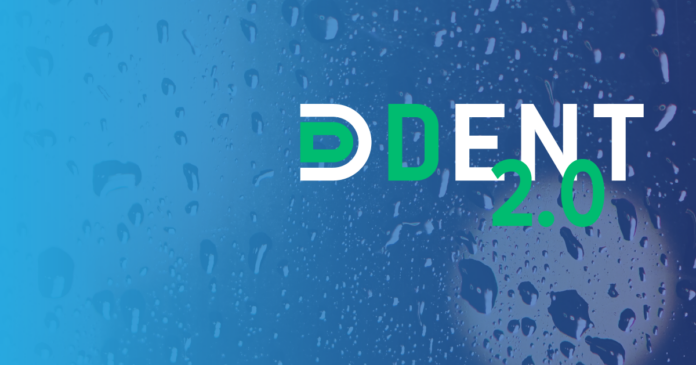Registration opens for FINOS’ Open Source in Finance Forum (OSFF) London, taking place alongside partner event Fintech Week London
London, UK – March 8, 2022 – FINOS, the Fintech Open Source Foundation and financial sector arm of the Linux Foundation, and The Linux Foundation, the nonprofit organization enabling mass innovation through open source, today announced its partnership with Fintech Week London. Their annual event, Open Source in Finance Forum (OSFF), will take place in London on 13 July, during Fintech Week London, which will run from 11 – 14 July.
This partnership highlights the elevated presence of open source software and open collaboration in the financial services industry, and will allow attendees of both conferences an opportunity to learn more about integrating open source software into their technology strategies. Through partnering with Fintech Week London, FINOS bolsters its European footprint – one it is focused on expanding over the course of 2022.
“Partnering with Fintech Week London signifies the growing recognition and appetite for financial services and fintechs to adopt and contribute to open source,” said Gabriele Columbro, Executive Director of FINOS. “Each year, our goal with OSFF is to not only inspire attendees to foster the open source community within financial services, but also bring industry leaders from financial institutions, fintechs and the regulatory space together to discuss how open source can drive innovation across the industry. This partnership is a natural way to bridge the efforts of Fintech Week London and FINOS in fostering technological innovation in the financial services industry.”
The Open Source in Finance Forum is dedicated to driving collaboration and innovation in financial services through open source software and standards. The first iteration of this conference, previously known as the Open Source Strategy Forum, took place in 2017, and it has since then grown to become the flagship event for the fast growing open source movement in financial services and its unique challenges. OSFF will also be held in New York City, USA on 8 December. The call for proposals is open for both events – view suggested topics and submit talks for each event at the links provided here:
Submit to speak at OSFF London (deadline is 10 April)Submit to speak at OSFF New York City (deadline is 12 September)
“The momentum of financial institutions looking to and relying on open source technology to scale and grow their businesses is growing at a rapid rate.” said Jim Zemlin, Executive Director, The Linux Foundation. “Holding Open Source in Finance Forum London as part of Fintech Week London will allow us to make even more financial institutions – especially in the UK – open source ready.”
Fintech Week London shines a light on the most interesting topics in financial
technology. Traditional financial institutions come together with fintechs and other financial services companies, in one of the world’s oldest leading financial districts. The event brings together high-street banks, challengers, technology giants, and disruptors, to discuss and showcase fintech’s global presence and the forces driving innovation in the industry.
“I’m very excited that we have the Open Source in Finance Forum as part of the official programme this year,” said Raf De Kimpe, CEO of Fintech Week London. The overall theme for #FTWLondon 2022 is ‘The Coming of Age of the Fintech Industry’; the industry is moving past its infancy to be a full-blown player in finance services. With so many mergers, acquisitions and partnerships taking place, collaboration and innovation are cornerstones of our programme. A day dedicated to open source software and standards is essential to have a well rounded view on evolutions in the Fintech Industry for all our attendees. On the third day of Fintech Week London, etc. Venues 133 Houndsditch will be transformed into the place to be for our attendees to learn how to best and safely leverage open source software to solve industry challenges”
FINOS’ commitment to fostering the adoption of open source reaches beyond US institutions, with an even distribution of contributors in both the United States and Europe. In recognition of its strong European grassroots, FINOS actively invests in nurturing its relationships across seas. Partnerships such as this bring an increased awareness to the collaborative work of developers, contributors and financial institutions driving adoption around the world.
“Collaborative efforts through open source adoption go far beyond US financial institutions,” said James McLeod, Director of Community for FINOS. “FINOS recognizes the potential power that world-wide collaboration possesses to drive innovation on a grand scale, and that’s why we continue to nurture relationships with our established European developers, financial organizations and fintechs. To continue this progression, we invest in forming new connections to support and expand the work being done by our community.”
Click here to learn more about and register for Open Source in Finance Forum London. To learn more about and register for Fintech Week London, please click here.
About FINOS
FINOS (The Fintech Open Source Foundation) is a nonprofit whose mission is to foster adoption of open source, open standards and collaborative software development practices in financial services. It is the center for open source developers and the financial services industry to build new technology projects that have a lasting impact on business operations. As a regulatory compliant platform, the foundation enables developers from these competing organizations to collaborate on projects with a strong propensity for mutualization. It has enabled codebase contributions from both the buy- and sell-side firms and counts over 50 major financial institutions, fintechs and technology consultancies as part of its membership. FINOS is also part of the Linux Foundation, the largest shared technology organization in the world. Get involved and join FINOS as a Member.
About the Linux Foundation
Founded in 2000, the Linux Foundation is supported by more than 2,000 members and is the world’s leading home for collaboration on open source software, open standards, open data, and open hardware. Linux Foundation’s projects are critical to the world’s infrastructure including Linux, Kubernetes, Node.js, and more. The Linux Foundation’s methodology focuses on leveraging best practices and addressing the needs of contributors, users and solution providers to create sustainable models for open collaboration. For more information, please visit linuxfoundation.org.
Linux Foundation Events are where the world’s leading technologists meet, collaborate, learn and network in order to advance innovations that support the world’s largest shared technologies.
Visit our website and follow us on Twitter, Linkedin, and Facebook for all the latest event updates and announcements.
The Linux Foundation has registered trademarks and uses trademarks. For a list of trademarks of The Linux Foundation, please see its trademark usage page: www.linuxfoundation.org/trademark-usage. Linux is a registered trademark of Linus Torvalds.
About Fintech Week London
The Coming of Age of The Fintech Industry
Fintech Week London shines a light on the most interesting topics in financial
technology, with a 2-day conference at its core. Traditional financial institutions come together with fintechs and other financial services companies, in one of the world’s oldest leading financial districts: London. From high-street banks to challengers, technology giants to disruptors, this five-day event showcases some of the best that London and global fintech has to offer.
Mark your calendars for the second edition on July 11-15, 2022.
To learn more about Fintech Week London please visit our website : www.fintechweek.london
FINOS Media Contact:
Ross Stevens
Caliber Corporate Advisers for FINOS
ross@calibercorporate.com
Fintech Week London Media Contact:
Raf De Kimpe
Fintech Week London
raf@fintechweek.london
The post FINOS and The Linux Foundation Partner with Fintech Week London, Strengthening European Presence appeared first on Linux Foundation.



